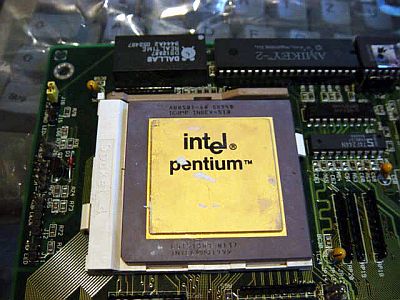Why can only 'low-spec CPUs' be taken into space?

By
The CPU installed in Curiosity , an exploration rover that continues to explore Mars, has a CPU spec of only 200MHz, which is much lower spec than today's smartphones. The reason for this is explained by Polish science writer Jacek Krywko: ``High-spec CPUs will break in space .''
Space-grade CPUs: How do you send more computing power into space? | Ars Technica
https://arstechnica.com/science/2019/11/space-grade-cpus-how-do-you-send-more-computing-power-into-space/
There are various phenomena in space that can destroy a CPU, such as vacuum, vibration, and extremely low or high temperatures. However, a problem that had been overlooked until recently was radiation flying through space called ' galactic cosmic rays .' When radiation hits the CPU, a voltage is generated, causing a phenomenon called ' Single Event Upset (SEU) ' in which stored bits are reversed, potentially damaging the CPU.
SEU is especially problematic for high-performance CPUs. The operating voltage of CPUs is decreasing year by year due to improvements in process rules and higher clock rates. Therefore, the CPU is now significantly affected by even the slightest change in voltage that occurs when radiation strikes.
According to Krywko, in the past, the problem of galactic cosmic rays was avoided by customizing semiconductor chips made of sapphire or gallium arsenide, which are less susceptible to radiation. However, in recent years, the cost of manufacturing semiconductors has increased, making it difficult to manufacture custom-made semiconductor chips.

By
It seems that modern space CPUs deal with the problem of galactic cosmic rays not by materials but by ``systemic innovations''. A typical system innovation is a mechanism called ``triple modular redundancy.'' A CPU with triple modular redundancy stores information on three chips instead of a single chip, and when reading information, it verifies the information stored on three chips and reads it across two or more chips. Outputs the saved information. However, a CPU with triple modular redundancy has lower specs than a regular CPU.
The latest space CPU is the quad-core CPU GR740 , which is scheduled to ship at the end of 2019. The GR740's process rule is 65nm, and its clock speed is approximately 250MHz, which is far inferior to the CPUs installed in modern smartphones, but it has passed the radiation resistance test (PDF file) . GR740 is calculated to have an error caused by galactic cosmic rays only once every 350 years.

By claudioventrella
According to Krywko, on extraterrestrial missions, CPUs will not only be used to control spacecraft and cameras and sensors on rovers, but in the future they will also be integrated into spacesuit visors. It is also planned to be used for augmented reality (AR) display functions and calculation of disaster prediction algorithms on the planet. Therefore, NASA is working with Boeing to develop an octa-core (PFD file) CPU called Highspace Spaceflight Computing (HPSC) equipped with two ARM Cortex A53 quad-core processors.
Related Posts:
in Free Member, Hardware, Posted by darkhorse_log







